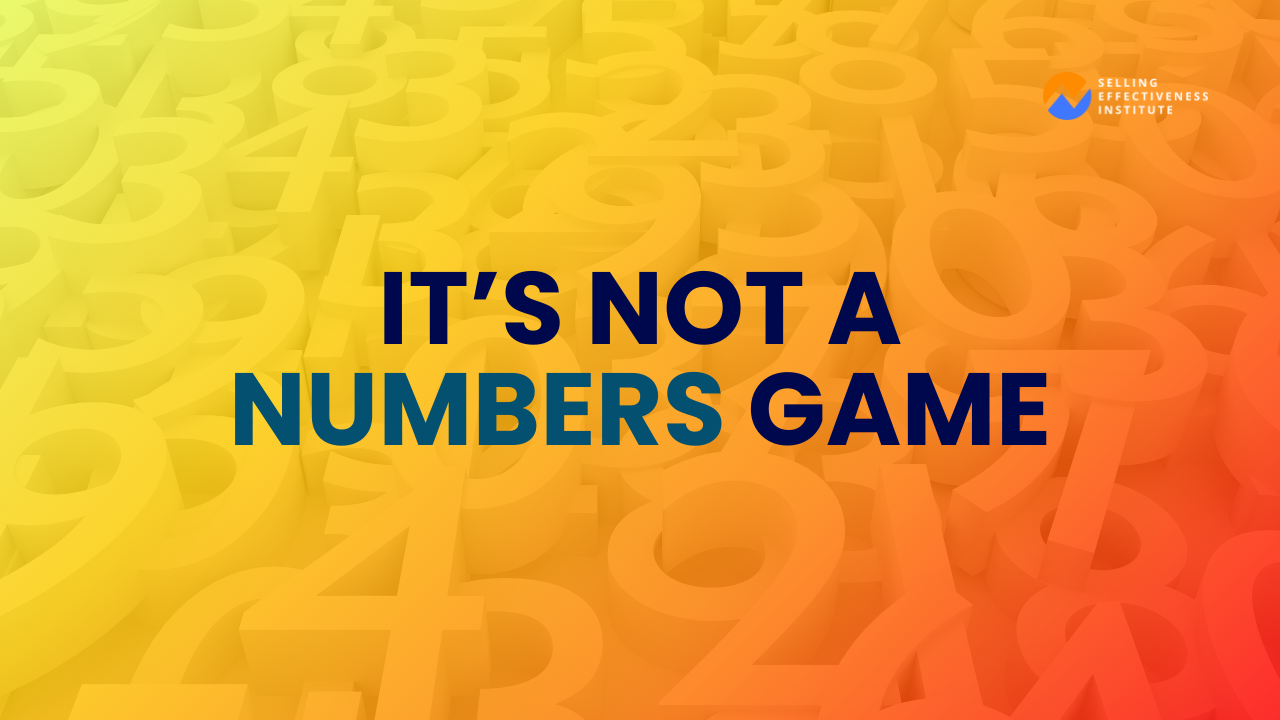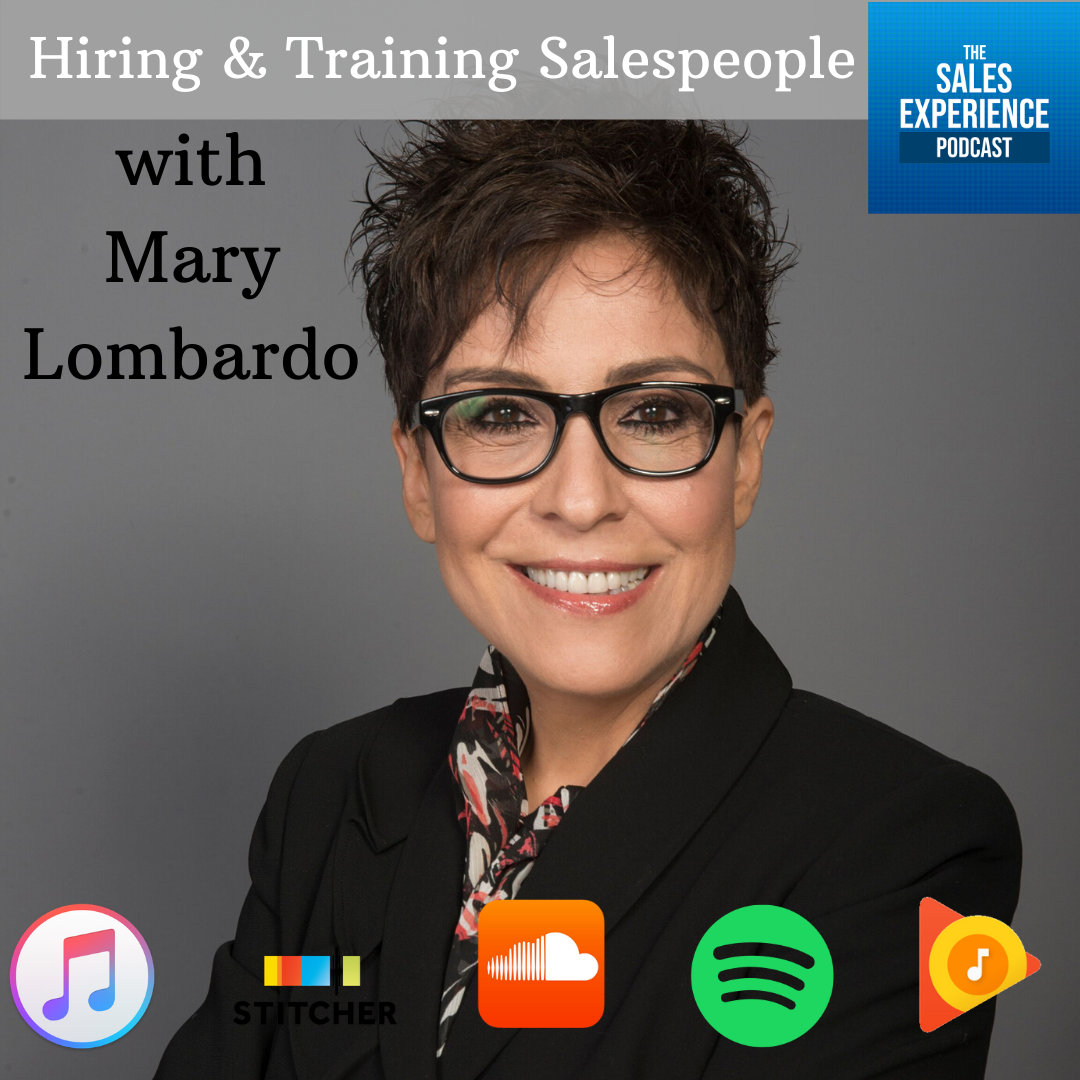Jason: Alright, welcome to the sales experience podcast. On today’s episode I have Mary Lombardo. She is focused on sales from the perspective of hiring and training. She has a long history of sales training prior to starting her own company, absolute impact corporation. Mary, welcome to the sales experience podcast.
Mary: Hi Jason. Thank you so much.
Jason: So it’s really cool because I found you by listening to the women in sales podcast and for any of the listeners out there to this podcast, you might not know if you’re new to this. You know that I’m just going to jump in. We’re going to start talking and I know that Mary, you’ve been doing podcasts, you’ve been focused on business, helping companies strategically with their hiring and training. So let’s just jump in and start with training. Here’s the big question. “Where do you think most organizations go wrong with training salespeople?”
Mary: So I think that there isn’t enough consistency in sales training and that management is not an integral part of the training. I think those two pieces kind of fall down when it comes to training. Training isn’t an event in my opinion that happens in corporations or any size company. It needs to be something that happens ongoing over time. So the behavior changes and it’s not just about the people in the field or inside sales. The management needs to participate in training as well so that everybody’s speaking the same language so that the managers are able to manage to specific strategies and skills and again, to really change behavior because training is all about developing sales skills so that obviously bottom line, revenue can be increased.
Jason: And I think that’s such an interesting point because I see a common failure I’m sure you see this too with a lot of sales organizations where they hire somebody. They’re training is maybe a little bit of classroom, maybe a little bit of time with the manager and then some shadowing on the floor or on the phones or whatever it is in meetings with a top rep and then from there here’s the information. Good luck. Let us know what else you need.
Mary: Right and I’m glad you brought that point up Jason, because another piece that I think is really integral and where sales training falls down if you will, is coaching in the field. So again, if those managers participate in sales training, they then know what to coach on in the field and absolutely have to go out with those newly trained people to offer feedback to coach, to mentor, to measure and monitor new skills and make sure, again that behavior is changing. Sales training is all about developing skills that change behavior and that needs to happen over time and in the field, in real life situations in prospects and customers with a manager that can offer coaching.
Jason: And shameless plug for my show here, the sales experience podcast, if you’re listening to this in a year, new checkout season one, I believe it was the first or second week where I talked about watching film. And that’s such an important part. It’s feedback from a manager. You know, having someone give you that feedback. If you’re a sales rep and you’re new, make sure you’re getting that. And then to the other point that you talked about, it’s so interesting and I use that in air quotes because it’s actually terrible, but it’s interesting how many times I’ve heard an interaction between a manager and a sales rep and the manager says, “well, you know, what about this part and you know, you should be saying this or why aren’t you doing X, Y, and Z ?” And then the sales rep knew whatever they are in their lifetime saying, ”we were never taught that. I was never explained that. Uh, we never went through that in training.” And so it’s so interesting when you have those gaps. And I know for myself, I’ve always tried to push the managers to be involved with training or be a part of the handoff, the development of training, and then for the trainers to really give them a good hand off of the rep to the manager so that they know exactly what was covered even if the rep doesn’t remember that they were told.
Mary: Sure. And that’s a really good point, Jason, because that does happen and you know, our brains can only take in a certain amount of information. So you know, in the defense of the sales rep who says we weren’t trained in that or taught that maybe they were and there was just too much information because of time constraints and you know, his or her brain just didn’t retain the information. But again, that’s what’s called a teachable moment. So if you’re in the field as a manager with a sales rep and you’re debriefing because certain skills or processes or procedures were missed at that meeting and the sales rep says, well, “I wasn’t taught that or that wasn’t part of the training.” That’s an ideal moment for a manager who participated in a training to offer in that teachable moment, the new skill again, to reinforce it, to revisit it, to completely reteach it, because that manager is now acting as a coach in the field.
Jason: So this is the big one I’ve always struggled with. Uh, many owners have asked me this and trainers and managers, which is regarding the timeline of what training should be like, how long the training portion of it should be. Now obviously the punchline to that, and you kind of mentioned it earlier, is that training is an ongoing thing. It’s like always happening. You’re always adding layers. There’s always a continuous education feedback component to being in sales, but primarily from the new hire-first day onboarded in training to going live in some capacity. I know it’s so different between across any company in any vertical in any way, but is there some point which you found where there’s kind of a, a line in the sand where someone should get to before they are kind of released with the training wheels?
Mary: Oh, that’s a really great question. And so I think some identifiable skills that could inspire confidence in a manager is, besides product knowledge. So, so that you know, the sales rep needs to know what it is that they’re selling, but more importantly why they’re selling it. And they need to be able to demonstrate that they can inspire a conversation that will open up the prospect and switch any preconceived notions that they may have about an air quote, sales salesperson and switch that paradigm to a consultant or a trusted advisor. So, you know, sales I think is, it’s something that we kind of come hardwired with. You can teach people how to sell, you can say certain things, you can retort to objections. But essentially you really need to know yourself, give a damn about what it is that you’re selling and why and, and your customer.
Mary: And it’s much more than just knowing product knowledge. Like you need to be able to know that I am ready to go out because I feel confident in myself and I believe in this product and not for the service enough to go to bat for it. And I’m going to know my customer or my prospect before I go talk to him and I’m going to make his or her life better. So kind of coming from a headset of, you know, a place of coming from a place of service. So the mindset needs to be there. I promise you, as I’m sure you did well up also Jason, when I was a brand new field sales rep, there were lots of mistakes that I made and every new sales rep was going to go out and stumble and make huge mistakes. But unfortunately, that’s the only way that we learn.
Jason: Yeah. If you go to your point on that topic, I have found, you’ve got to know the product knowledge. You’ve gotta be able to talk about if you’re a new rep and if you’re a trainer, you know you’re training them on, on what to talk about, what to say, the problem, like you said, that your product or service actually solves or what the benefit is to that buyer, to that prospect, right? Whether it’s business to business, business to consumer, doesn’t matter? You’ve got to know what it does for them and how it helps them get from A to B, whatever that looks like. And then what I have found is literally the next step is to just kinda jump into the pool, with some help with the floaties on and with the lifeguard there and somebody watching for ya. But you know, there’s this weird over-under on how quickly you kinda gotta get out there.
Jason: Cause here’s what I found. I’ve done weeks and weeks of training and sales training and script, uh, role-playing and practicing. And then I’ve, I’ve done half day where it’s like, let’s do a half-day and then throw you on the phone. Because what I found is if you do a lot of it, no matter what, is there something about it? And I think this is true for everything in life. You know, even sports if you look at it, but you can practice, you can think about it, you can read books, you can role play it in your mind. And then once you go out there and do it, all of that goes out the window. And your instincts take over and it’s not always pretty and you’re going to make, like I’ve found people make almost every mistake I said not to make, uh, and don’t say the things I said not to say. And then you just learn. You’ve got to fall down, then you’d get up. And that’s really the best way with adult supervision. And I see a lot of companies where they do it wrong, where they hire someone, they think, Oh, this person’s a salesperson, so I don’t need to teach them anything. Give them a little product knowledge, throw them out there and then don’t give them that feedback and the coaching and then the long term,
Mary: Yes. You know, that’s where attrition comes in because you know, if you’re not really working with your people and providing coaching and mentoring and you know, revisiting and debriefing on what went wrong and what went right and what could be done better the next time, you know, it can be demoralizing, especially for a brand new sales rep because sales is not for sissies. It’s a hard job. You know it’s an inside job because at least in my experiences, I got a lot more nos than I ever did get a yes, but the yes is what made it all worthwhile. Jason: Alright, thanks for tuning into this part of my conversation with Mary in keeping with my goal to make these episodes bite-size 10 to 15 minutes. Going to stop here. Watch for the next episode when it comes out, and we’ll continue the conversation where we left off with Mary and as always, make sure that you remember that everything in life is sales. People remember the experience you gave them.













